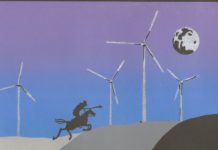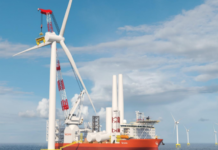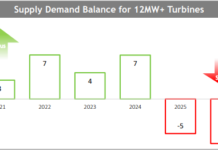Tom Konrad CFA
![gulf_035[1].jpg](http://www.altenergystocks.com/wp-content/uploads/2017/08/gulf_035_1_.jpg)
Disclosure: Long BEP.
Pattern Energy Group (NASD:PEGI, TSX:PEG) completed a very successful Initial Public Offering (IPO) on the Nasdaq and Toronto stock exchanges on September 27th. Not only did the shares price at $22, near the top of the expected range, but the underwriters exercised their full over allotment option to purchase 2.4 million shares in addition to the initial 16 million offered. Total proceeds from the offering were $404.8 million. Most of the proceeds went to Pattern Energy Group, LP (PEGLP) in consideration for a number of contributions and class A shares sold in the offering, but $56 million will be used to pay down debt and $60.2 million will be retained for general corporate purposes.
Investors greeted the offering enthusiastically, and the stock is trading comfortably above the offering price at around $23 per share since the IPO.
The Company
Pattern owns six wind power projects in the US and Canada with total capacity of 1040 MW and two development projects in Ontario (270 MW) and Chile (115 MW) which are expected to enter production in 2014. Post-IPO, public shareholders will control only a minority of the company’s common stock. Control of the company is held by PEGLP, which, along with its partners, will control 63.1% of voting rights through as combination 47.4% of Class A shares and 99% of Class B shares. Management owns the remaining 1% of Class B shares. Class B shares do not currently pay a dividend, but will convert into Class A shares at the end of 2014, or upon commercial operation of the Ontario Wind farm, if that has not yet occurred.
Distributable cash flow for 2014 is expected to be approximately $55 million,80% of which the company plans to pay to shareholders as a quarterly dividend of $0.3125 per share. Achieving this cash flow will depend on the on-time completion of the Ontario and Chilean wind projects. At $23 a share, $0.3125 quarterly amounts to a 5.4% annual dividend.
While completion of the Ontario and Chilean wind projects in 2014 can be expected to increase distributable income, conversion of Class B into Class A shares will offset this in 2015 by increasing dividend-paying shares by 29%. As a back-of-the-envelope estimate, if the income from the new wind farms is comparable to the existing wind farms on a per MW basis, we can expect distributable income to be increased by 37%. Given the wide range in profitability of wind farms, however, I feel it is safer to assume that the increased income from the Ontario and Chilean wind farms will only serve to offset the share dilution.
After the transaction, Pattern’s capitalization will be approximately 67% debt, and 33% equity, which is stronger than its closest comparable, Brookfield Energy Partners (NYSE:BEP, TSX:BEP-UN), which has about 20% equity and preferred equity. Brookfield’s longer track record and larger and more diversified portfolio of hydropower, wind, and solar assets should allow it to offer a lower yield than Pattern, but at $27.43, Brookfield’s yield of 5.3% is almost identical to Pattern’s.
Conclusion
Pattern’s shareholders seem to be betting on Pattern achieving rapid growth, or at least faster growth than comparable companies such as Brookfield. However, most of its growth in distributable income over the next two years is likely to be offset by the increased number of shares paying dividends, when class B shares convert to class A shares.
At the current price, Pattern Energy Group seems fully valued relative to its US-listed peers, and expensive relative to clean energy power producers with only Canadian listings. As such, the stock may be useful to increase the diversification and income in a clean energy stock portfolio, but it will probably not produce much share price growth in the near future.
This article was first published on the author’s Forbes.com blog, Green Stocks on October 22nd.
DISCLAIMER: Past performance is not a guarantee or a reliable indicator of future results. This article contains the current opinions of the author and such opinions are subject to change without notice. This article has been distributed for informational purposes only. Forecasts, estimates, and certain information contained herein should not be considered as investment advice or a recommendation of any particular security, strategy or investment product. Information contained herein has been obtained from sources believed to be reliable, but not guaranteed.








